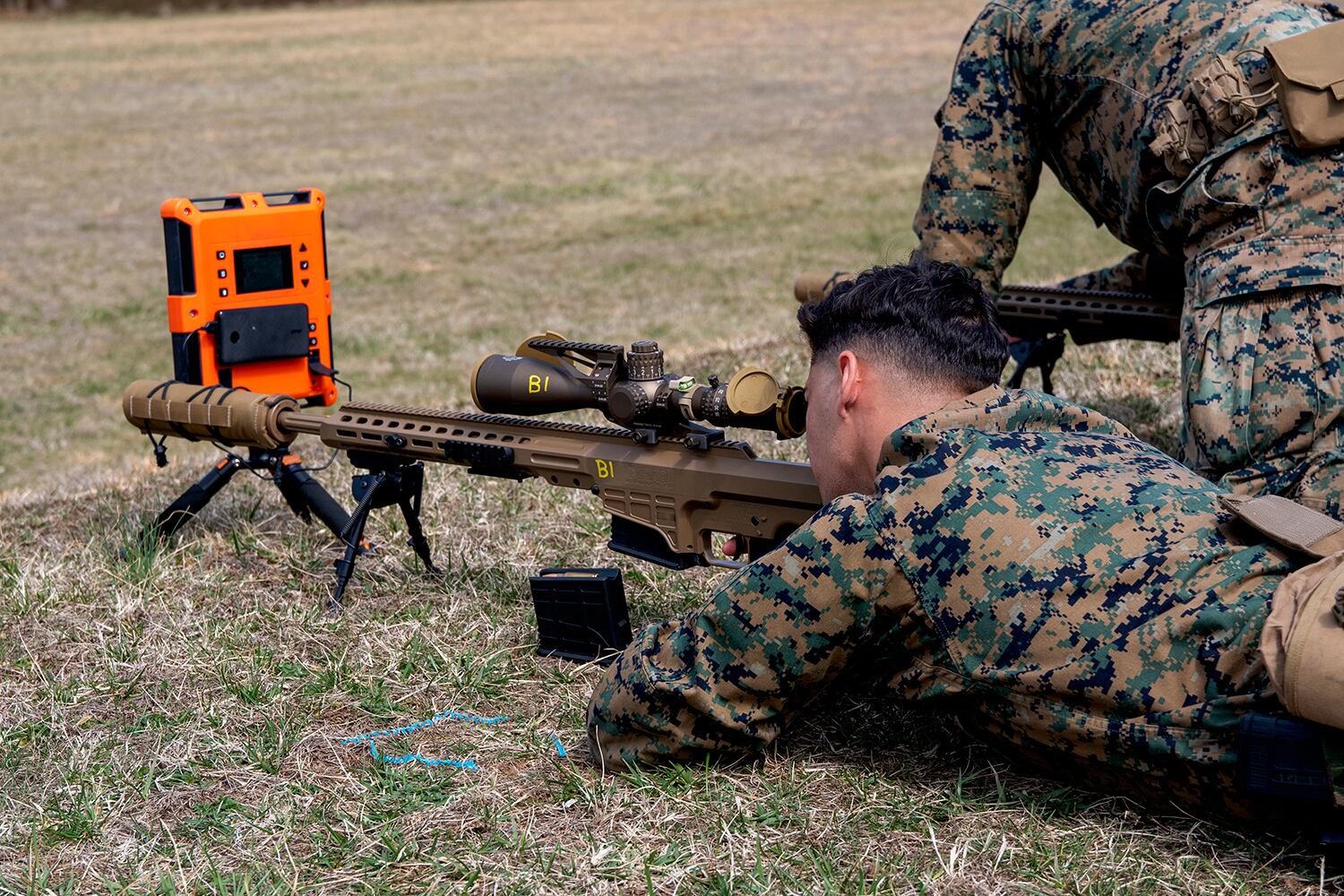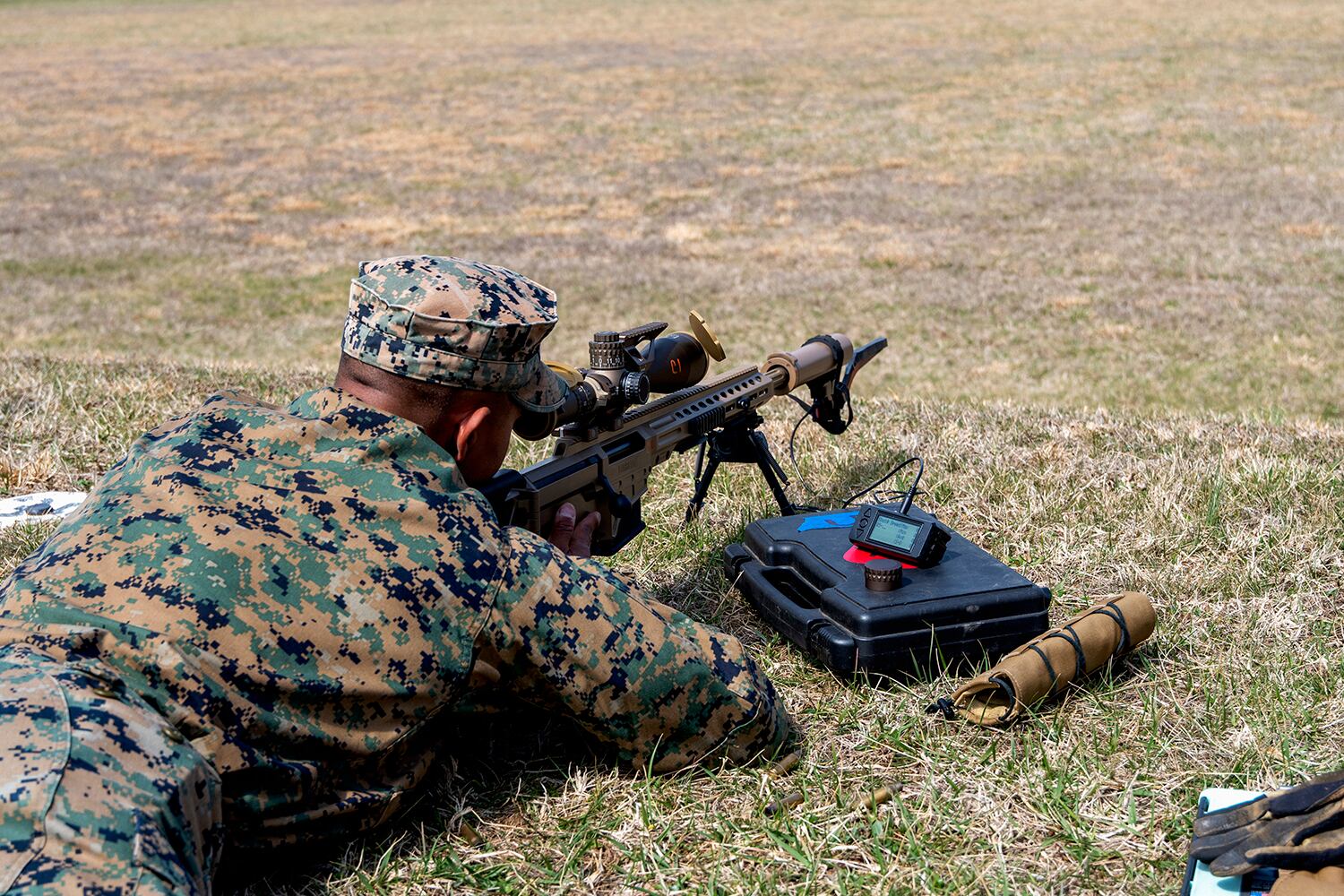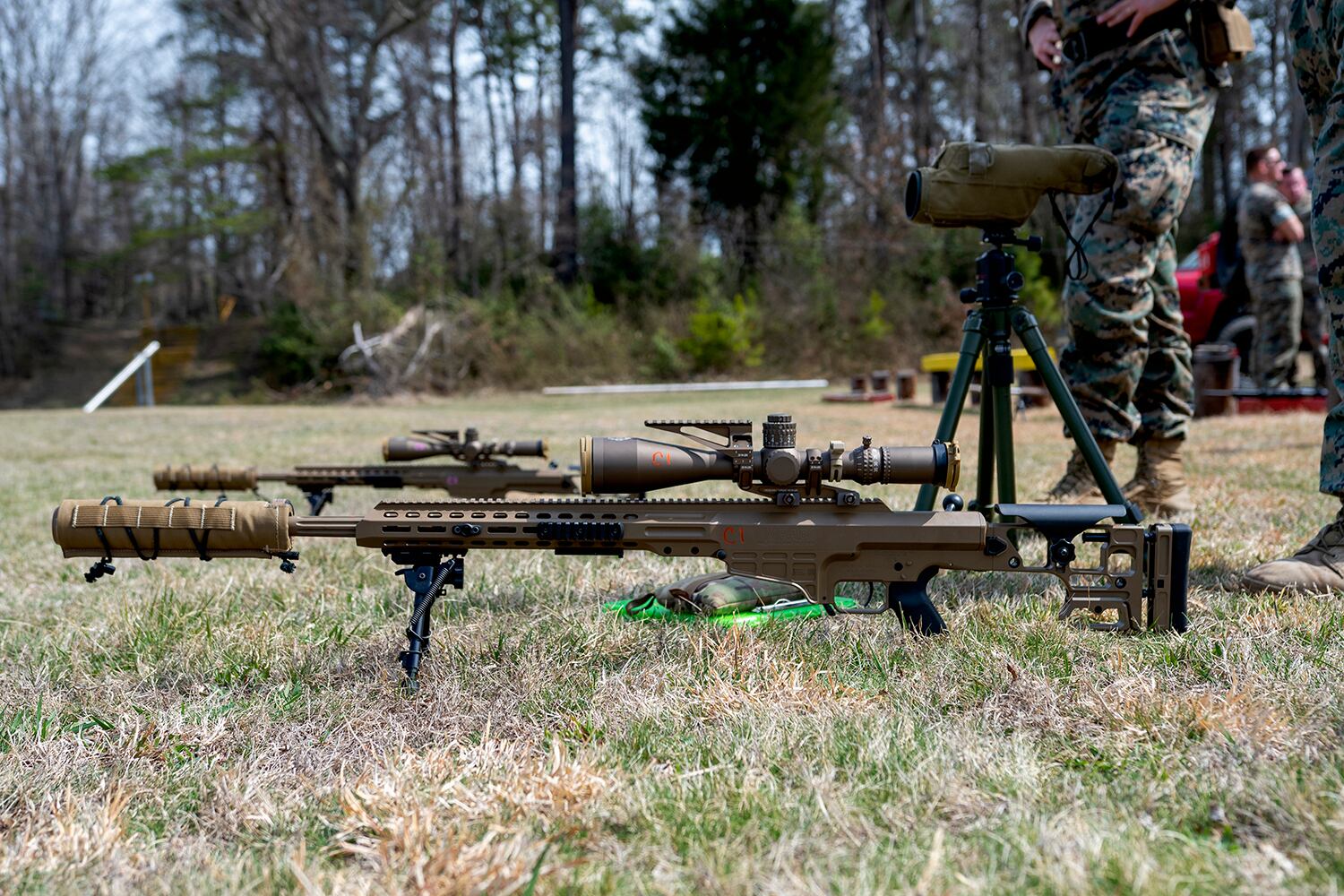Marine snipers are about to trim their sniper rifle inventory by combining two in one with a new multibarrel weapon that will give shooters three caliber options and replace two existing rifles ― one of which jarheads have been carrying since Vietnam.
Marine Corps Systems Command ― all things gear for Marines ― announced Thursday that the Mk22 Mod 0 advanced sniper rifle has nearly completed testing as it approaches fielding in 2023.
It is a bolt action, precision rifle system. The system part is important. That designation includes a bipod, sound and muzzle flash suppressor and a caliber agnostic 7-by-35 power Precision day optic.
The rifle will replace both the Mk13 Mod 7 and the M40A6 sniper rifles currently in use.
The Army previously announced that it also would replace its M107 sniper rifle and M2010 enhanced sniper rifle with the Mk22 Mod 0.
The M40A6 is a heavily modified version of the original M40, which first fielded during the Vietnam War and fires a 7.62 mm round.
The A6 model began fielding in 2016.

The Corps selected the Mk13 Mod 7 in 2018. It fires the .300 Winchester Magnum round. Accuracy International/Remington Arms makes the Mk13 Mod 7. U.S. Special Operations Command fielded an earlier variant.
Barret Firearms Manufacturing produces the Mk22. The weapon alone weighs 15.2 pounds, according to the company website.
The Mk13 Mod 7 weighs 11.4 pounds. The M40A6 weighs approximately 16.5 pounds. Both use a five-round magazine.
The Mk22′s effective firing range is 1,500 meters.
The M40A6 effective firing range is 800 meters. The Mk13 Mod 7 effective firing range is 1,300 meters.
All three rifles are bolt action.
The Mk22 Mod 0 is also called the MRAD, which stands for, “multirole adaptive design.”
That’s in part because Barrett makes civilian and versions of the weapon in 10 different calibers, ranging from 6.5 Creedmoor to .338 Lapua Magnum.
Barrett has provided .50-caliber sniper rifles to various military units for decades.
Initial fielding is slated for fiscal year 2023, which could mean as early as October.
The rifle uses a 10-round magazine. The caliber agnostic scope is another key distinction. This rifle will have four different barrel options, so a versatile scope is necessary.
Snipers can swap out either the .338 Norma Magnum, .300 Norma Magnum, 7.62mm and, for a limited time, the .300 Winchester Magnum.
That gives shooters ways to adapt shooting to specific mission sets that might require more distance or more punch to get through barriers or body armor.

“Instead of having to learn multiple weapon systems, we just have one,” said Staff Sgt. Cruz Nuanez, a scout sniper instructor with the Advanced Infantry Training Battalion, School of Infantry-East, at Camp Lejeune, North Carolina.
The 7-by-35 Precision day optic gives “greater magnification and observation capabilities” when compared with the current 5-by-25 optic, said Sgt. Christopher Frazier, marksmanship instructor with the Scout Sniper Instructor School and systems command liaison.
That improved optic gives snipers greater standoff and survivability.
They can “reach out and touch someone” from a good bit farther.
With those new accessors and capabilities comes more weight in the single package. But it technically reduces overall weight because shooters won’t have to carry an extra rifle, and all of the associated logistics and maintenance pieces.
Early issues will include four barrels, one for each caliber.
But the .300 Winchester Magnum barrel is a “one-time” issue, officials said. That’s to ease the shooting transition, since currently Marine snipers can choose from the 7.62 mm and the .300 Winchester Magnum in existing rifles.
“It’s definitely more efficient,” said Frazier. “Rather than putting one gun away and getting the next gun out, we can quickly change the barrels, and then we only have to carry ammunition and that extra barrel, not an entire extra gun and extra magazines.”
All three Marine scout sniper schools and Marine Corps Special Operations Command snipers assessed the entire package during evaluation periods, according to a press release.
“This event is a bit unusual for a program to do at this point,” said Nick Berger, project officer for the Mk22 program. “However, it is important for us to make sure the sniper community has what it needs to be successful, and the timing of this event allows us to identify issues before fielding and to correct as necessary.”
So far, according to the release, early feedback has been good.
“They are very user-friendly,” Nuanez explained. “It comes with all the tools you need and the tools are also user friendly. Taking the barrels off and putting them back on, as well as the bolt faces — there should be no issue.”
Though new snipers will get a better rifle out of the box, the course qualifications for the scout sniper community will remain the same, according to the press release.
Editor’s note: The article has been updated to remove an incorrect reference to the manufacturer of the M40A6 and an erroneous reference to the Mk13′s use as a replacement system.
Todd South has written about crime, courts, government and the military for multiple publications since 2004 and was named a 2014 Pulitzer finalist for a co-written project on witness intimidation. Todd is a Marine veteran of the Iraq War.




